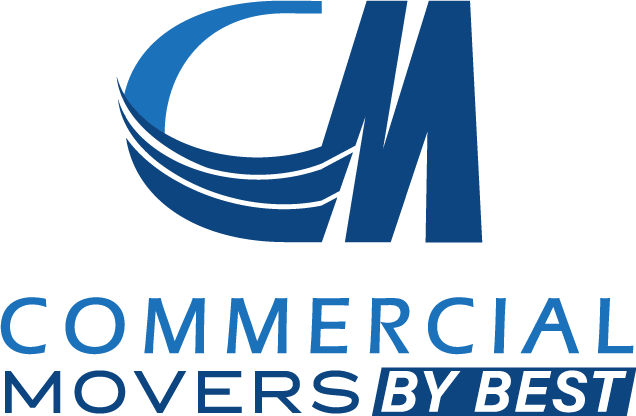Table of Contents
Key Takeaways
✔ Professional industrial movers have the expertise to handle complex relocations with precision and efficiency.
✔ Using specialized equipment ensures safe transportation of heavy and delicate machinery.
✔ Trained teams follow strict safety protocols to prevent accidents and reduce risks.
✔ Efficient planning and execution minimize downtime, keeping business operations on track.
✔ Valuation coverage provides financial protection against potential damages during the move.
✔ Hiring professionals helps avoid unexpected costs, making the relocation process more cost-effective.
Relocating industrial equipment and machinery is a complex process. Unlike standard moving services, industrial relocations involve heavy machinery, sensitive equipment, and strict safety protocols. Without proper handling, businesses risk costly damages, delays, and operational disruptions.
Professional industrial movers bring the necessary experience, tools, and strategies to ensure a seamless and efficient transition. From minimizing downtime to ensuring safety and compliance, their expertise makes a significant difference in the success of an industrial move.
Here are six key reasons why hiring professional industrial movers is essential.
6 Reasons to Trust Industrial Movers for Your Relocation
1. Expertise and Experience
Industrial relocations require careful planning, specialized knowledge, and the ability to handle large machinery safely. Professional industrial movers bring years of experience and technical expertise to ensure a smooth and efficient transition.
Understanding the Complexities of Industrial Relocations
Industrial moves are not as simple as transporting standard office furniture. They involve relocating large, heavy, and often delicate machinery that must be handled with care to avoid costly mistakes.
- Comprehensive Planning: Professional movers conduct a thorough assessment of the facility, equipment, and logistics before starting the move. This ensures that every step is strategically executed.
- Regulatory Compliance: Industrial relocations must adhere to safety and environmental regulations. Experienced movers follow these guidelines to prevent legal or operational issues.
- Coordination with Teams: Moving an industrial facility requires collaboration between different departments. Movers work closely with engineers, safety officers, and operations managers to ensure a seamless process.
Skilled in Handling Heavy Machinery and Equipment
Industrial machinery is often large, heavy, and complex, requiring specialized handling techniques. Heavy lifting movers have the necessary expertise and equipment to transport such machinery safely and efficiently.
- Proper Disassembly and Reassembly: Some industrial machines need to be taken apart before transport. Movers ensure each component is carefully dismantled, transported, and reassembled at the new location without damage.
- Load Balancing and Secure Transport: Proper weight distribution is essential to prevent machinery from shifting during transport. Movers use specialized techniques to secure equipment and minimize the risk of damage.
- Use of Specialized Lifting Techniques: Heavy machinery requires more than just manpower. Movers utilize forklifts, hoists, and rigging systems to lift and move large equipment safely.
Industry-Specific Knowledge for Different Sectors
Each industry has unique moving requirements. Industrial moving services cater to various sectors, ensuring that machinery and equipment are transported in compliance with industry standards.
- Manufacturing Plants: Industrial movers relocate large production machinery, assembly lines, and conveyor systems with minimal disruption to operations.
- Warehouses and Distribution Centers: Movers handle racking systems, forklifts, and inventory in an organized manner to maintain efficiency.
- Healthcare and Laboratories: Sensitive equipment, such as medical imaging machines and laboratory instruments, requires careful packaging and specialized handling to prevent damage.
Reducing Risks and Avoiding Costly Mistakes
A poorly executed industrial move can lead to significant financial losses, downtime, and safety hazards. Hiring commercial equipment movers helps minimize these risks and ensures that the relocation process is carried out professionally.
- Damage Prevention Strategies: Protective padding, custom crating, and climate-controlled transport options help safeguard valuable equipment during transit.
- Efficient Execution: Industrial moves need to be completed within strict timeframes to minimize business disruptions. Professional movers have the expertise to complete the process quickly and efficiently.
2. Specialized Equipment for a Safe and Efficient Move
Industrial relocations require more than just manpower—they demand the right equipment to ensure safety, efficiency, and precision. Professional industrial movers have access to advanced tools and machinery designed to handle complex moving tasks.
Advanced Tools for Heavy Lifting and Transport
Handling large and heavy equipment requires specialized tools that heavy lifting movers are trained to operate. These tools ensure that machinery is transported safely without causing damage to floors, walls, or the equipment itself.
- Hydraulic Lift Systems: These lifts allow for controlled movement of heavy machinery, preventing sudden drops or shifts that could cause accidents or equipment malfunctions.
- Forklifts: These machines are essential for lifting and transporting oversized equipment, ensuring that heavy loads are moved safely and efficiently.
- Air Skates and Rollers: These tools enable large machines to glide smoothly across the floor, preventing scratches and structural damage to both the equipment and the facility.
Protection Against Damage and Accidents
Using the right equipment is essential for preventing costly mistakes. Industrial moving services rely on specialized tools and safety measures to protect both the equipment and the work environment.
- Custom Crating and Rigging: Professional movers use custom-built crates and rigging solutions to secure fragile or sensitive equipment, ensuring that it remains intact during transportation.
- Heavy-Duty Straps and Securements: These securing mechanisms prevent machinery from shifting or tipping over during transit, reducing the risk of damage.
- Shock Absorbing Dollies: These dollies are designed to minimize vibrations, which helps protect delicate machinery from internal damage while being moved.
Efficiency and Time Management
Relocating large equipment without delays is crucial for maintaining business operations. Commercial equipment movers use the right tools and techniques to ensure that the moving process is both fast and organized.
- Pre-Planned Loading Strategies: Movers develop a detailed plan for loading and unloading machinery, which helps prevent delays and ensures that equipment is positioned correctly at the new location.
- Specialized Transport Vehicles: These vehicles are equipped with advanced suspension systems that absorb road vibrations, protecting sensitive equipment from damage during transit.
- GPS Tracking and Coordination: Movers use GPS tracking to monitor the movement of equipment in real time, allowing for better coordination and timely deliveries.
3. Safety and Risk Management
Industrial moves involve handling heavy machinery, sensitive equipment, and complex logistics. Without proper safety measures, the risk of injuries and damages increases significantly. Hiring professional industrial movers ensures that every aspect of the move is conducted safely, protecting both personnel and assets.
Trained Teams Follow Safety Protocols
Experienced industrial movers adhere to strict safety regulations to prevent accidents and ensure a smooth transition. Their training and expertise help mitigate risks associated with relocating heavy and delicate equipment.
- Specialized Safety Training: Movers receive training in safe handling techniques, load balancing, and equipment operation, ensuring the move is executed without incidents.
- Compliance With Industry Standards: Industrial moving services follow OSHA guidelines and other regulatory requirements to maintain a safe work environment.
- Emergency Preparedness: Trained teams have contingency plans in place for unexpected situations, reducing the likelihood of disruptions or damages.
Common Injuries in Industrial Relocations
Industrial relocations involve heavy machinery, complex logistics, and high-risk environments, making safety a top priority. Without the right expertise, improper handling can lead to serious injuries, delaying operations, and increasing liability risks.
- Muscle Strains and Sprains: Improper lifting techniques, especially when handling heavy equipment, can lead to acute strains and sprains, often caused by a single event like using poor body mechanics. Heavy lifting movers utilize specialized tools and proper lifting strategies to reduce the risk of strain-related injuries, ensuring safe and efficient handling of equipment.
- Crush and Impact Injuries: Mishandling or improperly securing machinery can cause crushing accidents, leading to severe injuries. Professional industrial movers use rigging, hoisting, and secure transport methods to prevent such risks.
- Slips, Trips, and Falls: Spilled liquids, loose cables, or uneven surfaces increase the risk of falls during relocation. Industrial moving services ensure proper site preparation to minimize hazards.
- Equipment-Related Accidents: Operating heavy transport vehicles without expertise can cause collisions and malfunctions. Commercial equipment movers are trained in safe equipment handling to reduce operational risks.

4. Minimized Downtime
Industrial relocations require strategic planning to avoid operational disruptions and financial losses. Hiring professional industrial movers ensures a seamless transition with minimal downtime, helping businesses stay productive. Research shows that downtime can cost large organizations up to $9,000 per minute, making efficient relocation essential to preventing unnecessary expenses and lost revenue.
Strategic Planning for Efficiency
A well-structured moving plan helps prevent unnecessary delays and ensures a seamless move. Industrial moving services follow a step-by-step approach to execute relocations swiftly and safely.
- Pre-Move Assessment: Professional movers conduct a detailed evaluation of the workspace, machinery, and logistical requirements to develop a customized relocation strategy.
- Timely Execution: Movers coordinate schedules carefully to minimize operational disruptions and complete the move within the shortest possible timeframe.
- Contingency Planning: A backup plan is in place to address unexpected challenges such as equipment malfunctions, weather-related delays, or transportation issues.
Phased Moving
A phased moving approach requires careful planning to ensure efficiency and minimal downtime. Industrial moving services develop structured relocation plans that prioritize critical equipment and operational needs.
- Prioritizing Essential Equipment: Key machinery and equipment are moved first to allow business operations to continue without delays.
- Scheduling Around Business Needs: Moving phases are scheduled to align with production cycles, reducing disruptions during peak operational periods.
- Coordinating with Workforce: Employees are informed and assigned roles for each phase, ensuring a smooth transition.
Equipment Relocation in Stages
Instead of moving everything at once, industrial movers transport equipment in a structured manner, allowing for a more controlled and organized transition.
- Partial Relocation of Machinery: Large-scale equipment is moved in sections, ensuring critical systems remain functional throughout the process.
- Testing Before Full Deployment: Each phase includes equipment testing to identify and fix any issues before moving on to the next stage.
- Minimizing Risk of Delays: A staged move prevents last-minute complications that could affect the entire relocation timeline.
Ensuring Business Continuity
A staggered moving strategy enables businesses to continue operations while different parts of the facility are relocated. Professional industrial movers coordinate each phase to ensure seamless workflow adjustments.
- Temporary Work Areas: Businesses set up temporary workstations to keep key operations running.
- Gradual Integration into the New Space: Teams adjust to new layouts and equipment setups in stages, reducing operational confusion.
- Continuous Communication with Teams: Regular updates ensure all departments are aligned with the moving schedule.
5. Valuation and Liability Coverage
Hiring professional industrial movers ensures businesses receive essential valuation and liability coverage. This protection is critical during industrial relocations, as it minimizes financial risks associated with equipment damage, accidents, or unforeseen issues.
Comprehensive Valuation Protection
Reputable industrial moving services provide comprehensive valuation policies that safeguard expensive equipment and machinery throughout the moving process.
- Coverage for Equipment Damage: If industrial machinery or equipment sustains damage during transportation or installation, valuation policies cover repair or replacement costs, preventing financial losses.
- Liability for Workplace Incidents: In the event of an accident, liability coverage ensures that the moving company, rather than the business, is responsible for injury claims or property damage.
- Protection Against Unforeseen Circumstances: Industrial moves often come with unexpected risks, such as accidents, weather-related delays, or transportation issues. Valuation coverage provides an extra layer of security, ensuring businesses do not suffer financial setbacks.
Why Valuation Matters for Industrial Moves
Industrial relocations involve transporting valuable machinery and equipment, making valuation coverage a crucial factor in ensuring a smooth and risk-free move.
- Safeguarding Business Investments: Industrial machinery represents a significant financial investment, and valuation ensures businesses do not face severe losses in the event of damage.
- Ensuring Business Continuity: Damages without valuation coverage can cause major disruptions, leading to downtime and lost productivity. Valuation helps businesses recover quickly without delays.
- Enhancing the Reliability of the Moving Process: Working with insured professional industrial movers provides businesses with confidence that their assets are protected throughout the relocation.
6. Cost-Effectiveness
Hiring professional industrial movers is a smart investment that helps businesses avoid unexpected expenses and optimize resources. While some may see it as an added cost, it ultimately leads to long-term savings by preventing damage, reducing downtime, and ensuring efficiency.
Preventing Unexpected Expenses
Relocating industrial equipment without the right expertise can result in costly mistakes. Industrial moving services help businesses avoid financial risks by ensuring a smooth and secure transition.
- Avoiding Equipment Damage: Improper handling of machinery can lead to expensive repairs or replacements. Commercial equipment movers use specialized techniques to transport delicate and heavy machinery safely.
- Reducing Workplace Injuries: Moving heavy equipment without trained personnel increases the risk of injuries. Heavy lifting movers follow strict safety measures to protect workers and prevent liability costs.
- Minimizing Regulatory Fines: Industrial relocations often involve compliance with safety and transportation laws. Industrial movers understand industry regulations, ensuring all processes meet legal standards and avoid costly fines.
Saving Time and Resources
A well-executed move keeps operations running efficiently and prevents unnecessary delays. Professional industrial movers streamline the process with careful planning and expertise.
- Efficient Planning and Execution: Experienced movers create detailed moving plans, ensuring all equipment is transported in the right order to minimize disruptions.
- Specialized Equipment for Faster Moves: Using advanced lifting tools and transport vehicles, heavy lifting movers complete the move more quickly than in-house teams.
Frequently Asked Questions
How long does an industrial move take?
The duration of an industrial move depends on the complexity of the project. Small moves, like relocating a few machines within a facility, may take a day or two. Large-scale moves involving multiple machines, disassembly, and reinstallation can take weeks. The time also depends on factors like distance, permits, and equipment setup at the new location. Proper planning and coordination help minimize downtime for businesses.
What industries use industrial moving services?
Many industries rely on industrial moving services, including manufacturing, construction, healthcare, and logistics. Factories and warehouses often need equipment moved or reinstalled when upgrading operations. Hospitals and labs require specialized moving for medical machines and delicate instruments. Data centers and IT companies use industrial movers for relocating servers and large-scale systems. Energy plants and heavy industries depend on them for handling turbines, generators, and production lines.
How do I choose the right industrial moving company?
Look for a moving company with experience in handling heavy machinery and commercial relocations. Check their credentials, licenses, and safety record before hiring. Read customer reviews and ask for references to verify their reliability. Ensure they offer services like rigging, packing, and storage if needed. A professional mover should provide a detailed plan and cost estimate before starting the job.
Can industrial movers relocate an entire office along with equipment?
Yes, industrial movers often provide office relocation services along with moving heavy machinery. This includes desks, chairs, computers, filing cabinets, and networking equipment. Movers use specialized packing for electronics and IT systems to prevent damage. They also handle server relocations, ensuring data centers and communication equipment are moved securely. Labeling and careful organization speed up the reinstallation process at the new location.
How do movers protect industrial floors and walls during relocation?
Industrial movers use floor protection mats, skid plates, and padding to prevent damage to floors and walls. Heavy machinery can cause scratches, dents, or structural damage if not handled properly. Rollers and lifting jacks are used to distribute weight evenly when moving across delicate surfaces. Protective barriers are placed around tight spaces to prevent wall damage. If moving in an area with fragile flooring, movers take extra precautions to reduce pressure.
Choose Expert Industrial Movers for a Seamless Move in White Plains, NY!
Relocating heavy machinery and industrial equipment requires precision, experience, and the right tools. Commercial Movers By Best is the trusted choice for businesses in White Plains, NY, providing efficient and secure moving solutions. Whether upgrading facilities or relocating operations, our team ensures a smooth transition with minimal downtime. We handle every detail, from planning to transport, so your business can stay focused on what matters most.
Contact Commercial Movers By Best today for reliable industrial moving services in White Plains, NY!


